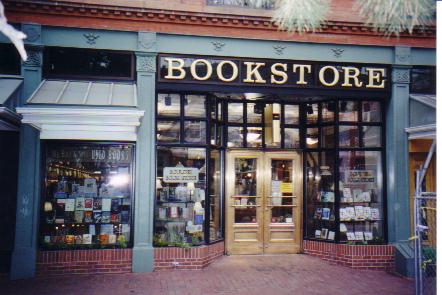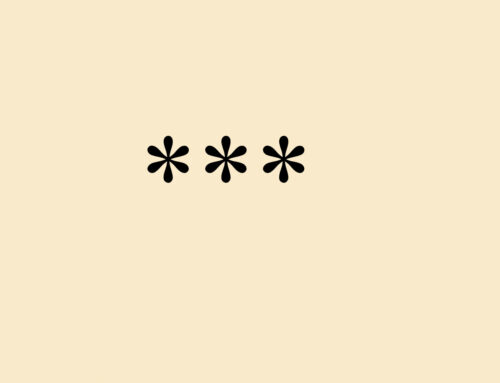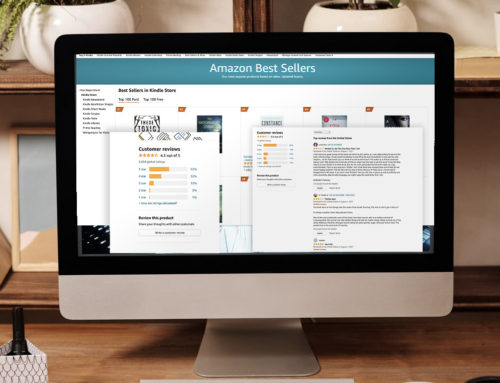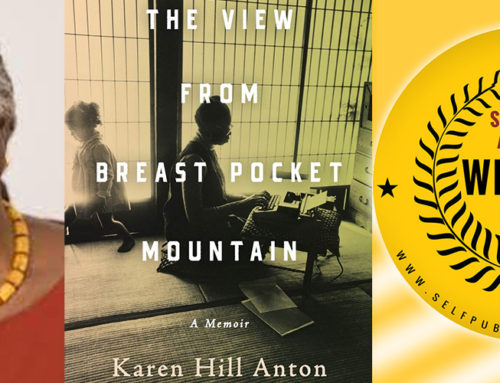 On Kash’s Book Corner there’s an eye-opening post about how book buyers and publishing reps interrelate – and it’s such a nightmarish scenario that it makes me almost proud of the fact that it’s harder for self-publishers to get into bookstores (even if that is where most books are sold). The fact is that book buyers – even in small independent stores – have as narrow a criteria as editors and agents.
On Kash’s Book Corner there’s an eye-opening post about how book buyers and publishing reps interrelate – and it’s such a nightmarish scenario that it makes me almost proud of the fact that it’s harder for self-publishers to get into bookstores (even if that is where most books are sold). The fact is that book buyers – even in small independent stores – have as narrow a criteria as editors and agents.
What’s especially troubling about the post is that it has a number of positive comments, saying things like “This is fascinating.” It is an interesting window into the contemporary book business, but it’s also enormously vexing. Here’s a sample:
Ron, as usual, rushed in to fill the silence. He started his well-rehearsed spiel about how this book was a look at the demographic revolution in Europe and how the Muslim populations were growing and asserting themselves in the different countries. I yawned. I’m sure Caldwell’s book is well researched, but I was ready for some bling, for crying out loud.
The book is reduced to its catch-phrase, no differently than in a query letter. Does the writing matter whatsoever? No, he admittedly discards something based on very limited evidence – and he does this after the book has already been accepted by a publisher. It’s prime evidence that getting traditionally published is not the holy grail, and finding new methods to reach readers that bypass this type of knee-jerk gatekeeping is enormously important: for all writers.
Later he says,
Confronted with Othmer’s book on the catalog page, I tried to see it in the best light possible. It’s basically a book about advertising (sounds like a contemporary Mad Men) that is gunning for a general audience. Ron showed me two possible covers. One bizarrely featured a fried chicken leg, while the other showed the earth. I ordered five copies and prayed the chicken leg would go away. My guess is that without the personal interaction with Othmer on Twitter, I would have gagged on that chicken leg and moved on without bringing the book into the store.
Literally, he’s judging a book by its cover. Finally:
Knopf was next. There aren’t really enough good things that can be said about this publisher. Last year, eight of the top ten New York Times Books of the Year were Knopf titles. This list included novels by Kazuo Ishiguro (24 copies), Lorrie Moore (12), James Ellroy (12), A.S. Byatt’s most promising since Possession (16), and Richard Russo (21). In a year without Dan Brown and a recession all of those numbers would have been about 50% higher. Still, that’s a lot of books.
So the books he chooses are based purely on sales numbers. There is no difference with this mode of thinking and how agents and editors often select books – especially on the mainstream level.
Certainly, the bookseller is running a business and there is a lot of competition from the web, so he has to think about the bottom line, but the thrust of the post is that traditional publishers are offering weak lists – but ironically it’s the obsession with sales and brand names that is driving all facets of the traditional publishing industry, so it’s hard to be totally sympathetic.
What it boils down to is that fewer people are reading – or at least fewer people are buying books full price at bookstores. I confess that I never buy books new at bookstores – why bother when you can potentially get the same book for a $1 at Amazon. So one can understand the bookseller trying to stay afloat. But it would seem like bookstores seriously need to change their business model (like the Vermont store that offers POD via the Espresso Book Machine) to not keep so many writers out of their inventory. Bookstores are great, love them (used bookstores mainly), but if this is how bookstores run the business – looking at sales over the quality of the writing – then I’m not too broken up about their potential demise.
Get an Editorial Review | Get Amazon Sales & Reviews | Get Edited | Publish Your Book | Enter the SPR Book Awards | Other Marketing Services






















The last book I bought at Amazon.com, from one of their third party dealers, was a penny, plus shipping.
This was the brand new hardbound First Edition, not the paperback selling for ten bucks. This is the madness of remainders and why I was sure to buy mine when I had a deal with a traditional publisher.
The nature of book selling and buying is changing along with reading habits. As ever, it’s evolve or die.
It all seems so wasteful and inefficient. “I’ll buy 5 of those and 15 of those and 100 of those and 12 of those . . .” when really no one, not the bookseller nor the RH rep have a clue — not a single effin’ clue — which of those books will be a hit and which will be a miss. It is that inefficiency that is the great Achilles’ Heel of publishing. It exists at every level of the publishing process, and if it isn’t solved soon, traditional publishing is doomed. I really hope the Espresso Book Machine catches on because for the first time in modern publishing history, maybe it will bring a little bit of efficiency to an industry that just seems to be flailing wildly about.
arno books is a new publisher trying to take a new approach. Arno’s latest blog entry “Democratic Capitalism” talks about exactly what J.M. Reep’s comment addressed–increasing efficiency. arno books does that by getting the readers involved in the early stages of the publishing process and creating demand before publishing. Take a look: http://www.arnobooks.com.
Of the self-published writers who post here, what’s been your experience of approaching storefront booksellers with your product? What was your strategy, and how did it go?
“Of the self-published writers who post here, what’s been your experience of approaching storefront booksellers with your product? What was your strategy, and how did it go?”
I was laughed out of one store – the guy actually laughed at me. Otherwise I’ve had pretty good results. Indie bookstores almost always offer to take at least one or two on consignment. It’s always good to follow up and you must always present yourself well – not wearing a suit presentation, rather friendly and affable and professional. I offer a nice glossy A4 promo poster if they’re interested in putting that up somewhere. You’ll have to resign yourself to everything going out on consignment, but that’s part of the game.
Once the espresso book machine thing takes off, we’ll all be on an even footing, just like with Amazon. Time and perseverance will see a change in the face of publishing very soon.
I can’t say enough good about most of the bookstores I’ve approached with God’s Thunderbolt: The Vigilantes of Montana. Every member of the Hastings chain I approached has been receptive and enthusiastic. The local Borders store has been great to work with, and they work as hard to sell my book as some of the best sellers. The fact that people come to ask for it helps, too, of course. The indie bookstores have been more cautious, but that’s to be expected because they operate on a slim margin. Once the book is in the store, I support it with sales materials such as flyers and posters. I try to establish a relationship with the booksellers, and let them know about awards so that they can have some ammo to use in their sales efforts.
Winning the Spur didn’t hurt, of course, but even with that, I still work on establishing relationships. This is not the only book I’ll want them to sell for me, and they may not all win awards.
Henry,
I think the issue is more complicated than you make it out to be in this post. Yes, I use covers to help make a decision on whether or not to buy a book by an unknown author (but the Othmer section of the entry was really a joke.) They were going to put a picture of fried chicken leg on a book with serious aspirations. Is that my fault as the buyer that they were going to put a completely unsellable cover on a book? Yes, I use previous sales numbers to guide my choices. I am in the business of selling books. And authors like baseball players tend to perform in predictably statistical patterns over the course of their careers. No, I can’t judge 99.9 % of the books by the quality of the writing. How could I possibly even have the time to read a page of them?
The real problem is the sheer number of books being published. On the week that this appointment took place, I met with three different reps. Each rep (2 RH reps and a commissioned rep) had hundreds of books that they were selling me. I had to go through at least 2,000 titles in those three days. That was one of the major points of the blog. Why can’t the publishers do a better job of focusing these lists? In a course of a season I will wade through more than 10,000 titles. How can anyone make an informed decision on every one of them or even half of them?
As far as judging books by the quality of their writing. To a large degree, I use the publishers as the screen. If it’s a Knopf book I know there is a very good chance it will be well written. I approach it much differently than I would a book from say, Ballantine, which is a much more commercial publisher. That said, plenty of well written books fail. If there is no marketing, if the author doesn’t push his own book, if the cover looks awful.
What I’m really looking for is the book that will resonate with my audience. We have had amazing success featuring eclectic titles (including self published books) on our recommended cases throughout the years. If you have ever visited the store, I’m sure that you would agree that it is a much different selection than what you’d see at the chain stores or other major independents.
Anyway, we embrace self published books at the Boulder Book Store. In fact, we are having a local author night next week where three self published authors will be signing their books.
Check out my post on local author Robert Dresner, who is self published. http://kashsbookcorner.blogspot.com/2009/02/self-published-man.html
Thanks for chiming in. The root of my frustration with the whole process is that you’re even put in this position. The maddeningly inefficient and crapshoot-like system that seems very similar to how traditional publishing accepts new writers. So the onus is on the system, not necessarily on how you choose books, if this is the way books are presented. I like JM Reep’s comment above: “It is that inefficiency that is the great Achilles’ Heel of publishing. It exists at every level of the publishing process, and if it isn’t solved soon, traditional publishing is doomed. I really hope the Espresso Book Machine catches on because for the first time in modern publishing history, maybe it will bring a little bit of efficiency to an industry that just seems to be flailing wildly about.” The system seems some serious retweaking from the bottom up. Elements of a better system can be the subject for another post, but this at least points out that a better system is needed.
Oh, and very nice post about Dresner. I recommend people check it out.